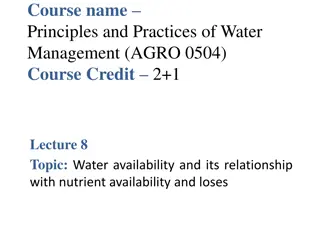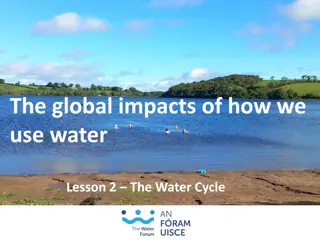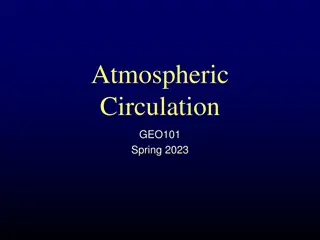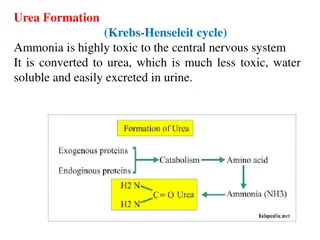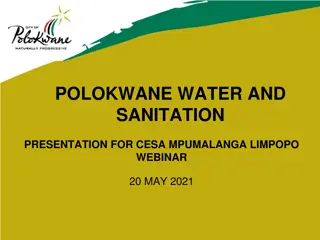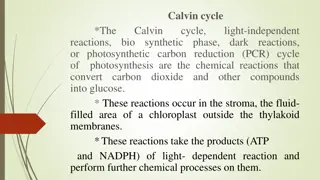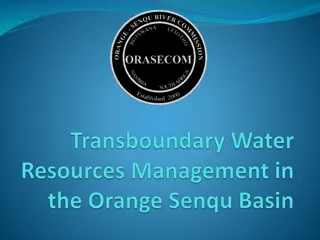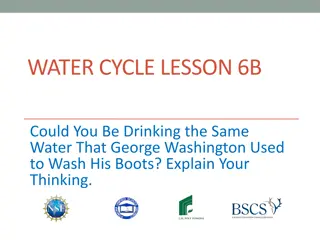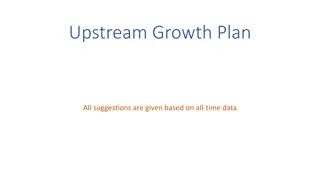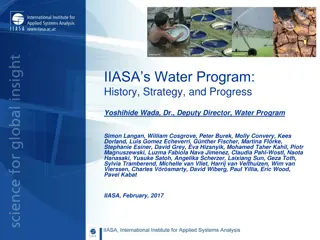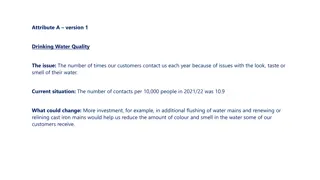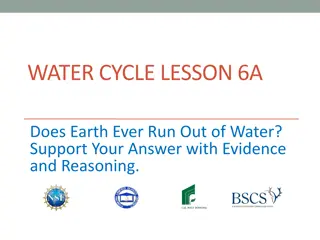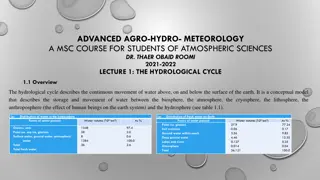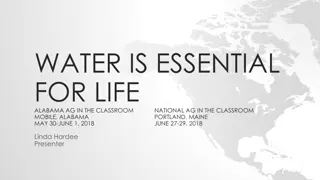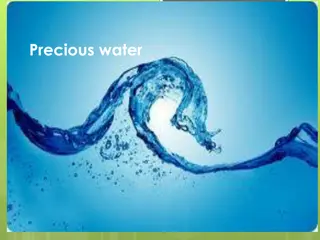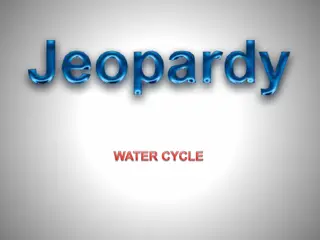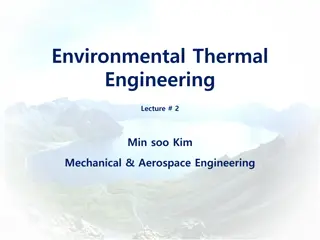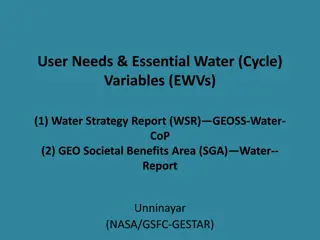Exploring the Water Cycle Through Keywords
Dive into the fascinating world of the water cycle by exploring key terms such as evaporation, condensation, precipitation, and more. Follow the journey of water as it moves from land to sea to the sky through a series of natural processes.
Download Presentation

Please find below an Image/Link to download the presentation.
The content on the website is provided AS IS for your information and personal use only. It may not be sold, licensed, or shared on other websites without obtaining consent from the author.If you encounter any issues during the download, it is possible that the publisher has removed the file from their server.
You are allowed to download the files provided on this website for personal or commercial use, subject to the condition that they are used lawfully. All files are the property of their respective owners.
The content on the website is provided AS IS for your information and personal use only. It may not be sold, licensed, or shared on other websites without obtaining consent from the author.
E N D
Presentation Transcript
5th May Lesson title: The Water Cycle Keywords Learning Intention: Evaporation Describe the cycling of water. Precipitation Run-off Condenses Glacier Transpiration Vapour
The Water Cycle There constant movement of water from land to sea to the sky is called the water cycle. There are 5 main parts of the water cycle, we are going to look at them in more detail
The Water Cycle Stage 3 Stage 4 Stage 2 Stage 1 Stage 5
Stage 1 - Evaporation Water evaporates from rivers, lakes, seas and the oceans. Water can also enter the atmosphere when burning fossil fuels.
Stage 2 - Transpiration Water evaporates from the surface of plants, such as there leaves this is called transpiration. When the sun heats up water from the leaves of trees.
Stage 3 Condensation Water vapour cools and condenses into tiny droplets of liquid water to form clouds.
Stage 4 Precipitation Some of the clouds may be blown over land, if they travel over mountains they may cool further. Larger water droplets fall as rain, sleet or snow, this is precipitation. If precipitation falls on the ground in polar regions, it may stay for thousands of years and form glaciers.
Stage 5 Collection Water percolates and collects in rivers or streams (surface run-off) or as groundwater and flows to the ocean. Some can soak into the Earth (infiltration) and can be stored there, it can come to the surface via springs or wells.
Task: Can you work out what key word goes which each different definition? 1. Rain, hail, sleet and snow that falls from the clouds Condensation 2. When water vapour cools and turns into clouds Surface run-off 3. When the sun heats up water from the sea and it goes into the air. Evaporation 4. When water flows through the rocks and soil underground. Transpiration 5. When the water runs off the surface of the ground. Groundwater flow 6. When the sun heats up water from the leaves of trees. Precipitation
Solutions 1. Rain, hail, sleet and snow that falls from the clouds Precipitation 2. When water vapour cools and turns into clouds Condensation 3. When the sun heats up water from the sea and it goes into the air. Evaporation 4. When water flows through the rocks and soil underground. Groundwater flow 5. When the water runs off the surface of the ground. Surface run-off 6. When the sun heats up water from the leaves of trees. Transpiration
Positives from the water cycle Some of the water can be dammed and used to produce electricity sustainably. Growing crops, drinking and for houses.
Negatives from the water cycle Precipitation can also be damaging, examples include; flooding, car accidents and hail can damage cars.
What have you learned? What can water can be used for? What is the name for rain which begins with P? When liquid passes from liquid to gas it is called E___________. Condensation is when c______ are formed in the sky. Precipitation, evaporation and condensation are all part of which cycle?



